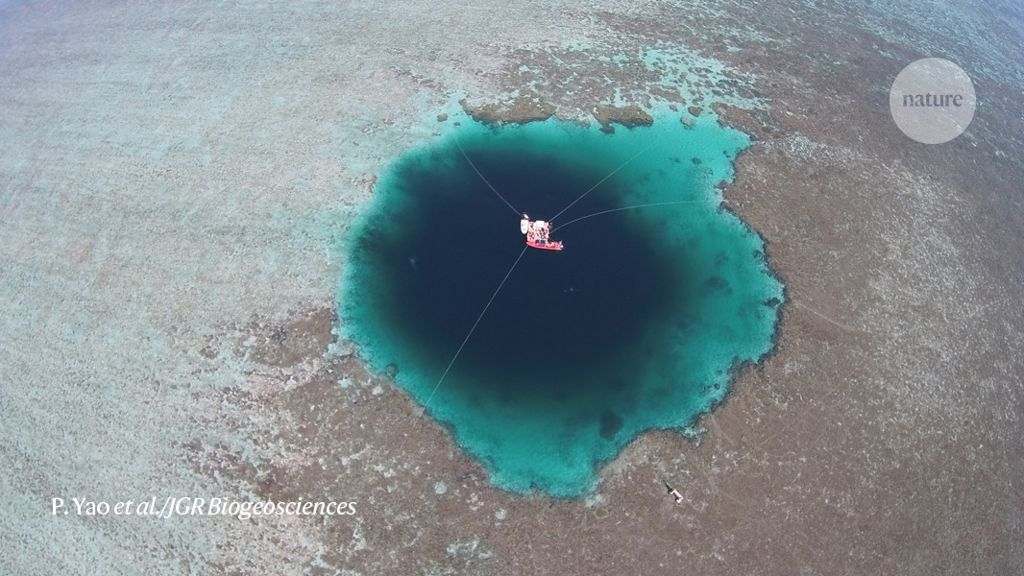A research platform floats above the Yongle blue hole, whose 130-metre-wide mouth is surrounded by coral reefs. Credit: P. Yao et al./JGR Biogeosciences
Ocean sciences
Carbon more than 8,000 years old lies deep inside a yawning sinkhole in the South China Sea.
Blue holes are underwater caverns carved into dissolving rock. The deepest known marine cavern is the Yongle blue hole, which measures roughly 300 metres from top to bottom. Its waters are mostly isolated from the surrounding ocean and receive little fresh water from rainfall, making it a rare spot to study the chemistry of oxygen-deprived marine ecosystems.
Peng Yao at the Ocean University of China in Qingdao and his team collected bottles of water at various intervals, from the Yongle’s mouth to a depth of 270 metres. The researchers found low levels of dissolved organic carbon and high levels of dissolved inorganic carbon, both of which are unusual for coastal waters. Radiocarbon dating showed that the deep dissolved carbon was thousands of years old, meaning that water in the depths of the hole had probably not mixed with the open ocean for a very long time.
The blue hole offers a rare glimpse of unusual ocean conditions, which may help scientists to understand the extreme chemistry of past and future oceans.

